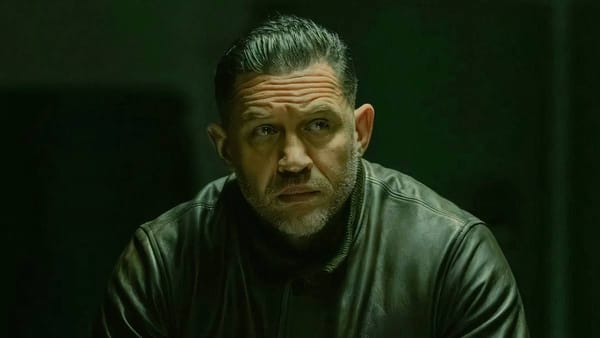Kill or be killed.

JOHN WICK: CHAPTER THREE – PARABELLUM begins in motion. Not metaphorically — literally. Wick is already injured, already hunted, already out of time. The film picks up seconds after Chapter 2 and never stops to breathe. What emerges isn’t escalation for its own sake, but a study of how ritual violence closes in around a man who once navigated it with surgical poise.
Keanu Reeves plays Wick as someone operating on the thinnest thread of will. The exhaustion is palpable — not theatrical, not brooding, but physical. Every movement feels like a calculation he can’t afford to get wrong. The film leans into that fragility, showing a man whose myth is far more invincible than his body.
The supporting cast grounds that myth in texture and consequence. Halle Berry’s Sofia arrives with her own codes and wounds, and the Casablanca sequence reveals a world that does not revolve around Wick but intersects with him. Her scenes are precise, disciplined, controlled — the work of actors and stunt teams who understand choreography as narrative.
But the film’s most important adversaries are the Shinobi, played by Yayan Ruhian and Cecep Arif Rahman — two of the finest screen fighters alive, known for The Raid's bone-deep physicality. Their presence elevates the film from stylish violence to genuine martial artistry. These are not faceless henchmen; these are craftsmen. Their movements are purposeful, clean, respectful. They fight Wick the way master calligraphers sign their names — with exacting strokes.
Mark Dacascos’s Zero, their leader, is played with a warm, unsettling charisma. He admires Wick with the sincerity of a student meeting a legendary mentor — and that sincerity makes him more dangerous, not less. His Shinobi treat their duels with Wick as ceremonial encounters, moments worthy of gratitude. The admiration is real; so is the threat.
The film’s set pieces highlight a commitment to physical filmmaking that borders on obsessive. The library fight, the antique knives sequence, the horse stables, the motorcycle chase — each executed with spatial clarity and grounded physical logic. No shaky-cam shortcuts, no digital smudging.
JOHN WICK: CHAPTER THREE – PARABELLUM respects the viewer enough to show the entire body in motion.
The glass room finale distils the film’s thesis: Wick isn’t just fighting opponents — he’s fighting reflections of himself. Every pane, every fracture, every mirrored angle becomes part of the choreography. The visual metaphor doesn’t announce itself; it simply exists, letting the audience feel the multiplicity of Wick’s past closing in.
The High Table’s presence expands the mythology without drowning the narrative in lore. Asia Kate Dillon’s Adjudicator brings a bureaucratic menace that feels entirely believable: authority rendered cold, polite, and unflinching. The Elder’s desert enclave, meanwhile, hints at the moral rot underneath the rules that supposedly give this world structure.
What lingers after the violence isn’t spectacle — it’s the sense of a man running out of places where his skills still matter. Wick’s world has expanded, but his emotional territory has shrunk. The bigger the universe becomes, the more alone he is inside it.
JOHN WICK: CHAPTER 3 – PARABELLUM is the series at its most technically ambitious, visually inventive, and physically punishing. It respects its performers, its audience, and its craft. And it never lets the mythology overshadow the humanity — or the weariness — at the story’s core.




